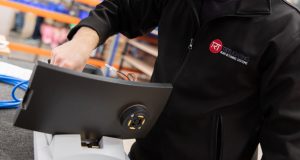A biotech cleaning company has revealed test results of contamination levels in key public settings that show everyday surfaces to be very high risk for infection spreading, despite regular, and professional cleaning regimes. Case studies include a primary school, an NHS clinic and five-star hotels, all of which had dangerously high levels of contaminated surfaces prior to treatment with their breakthrough antimicrobial coating, which was proven to reduce cross contamination risk by up to 90% in the majority of cases.
A biotech cleaning company has revealed test results from public spaces including a primary school, five-star hotels and an NHS clinic that show dangerously high levels of surface load contamination on key surfaces and touchpoints, in some cases higher than those found on tested toilet seats.
The company, Zonitise, uses a test, treat, test method when applying its unique antimicrobial coating to buildings, and is sharing some of its results for the first time to alert people to the risks of highly contaminated surfaces. Zonitise’s tests prior to treatment with its coating have revealed that despite regular professional cleaning, surfaces and touchpoints are still reaching dangerously high bacterial and viral load levels in public spaces. The follow-up tests post-treatment then revealed more than 90% reductions in bacteria surface loads to leave them good, clean and at hospital grade levels.
The testing process used is to measure ATP levels on surfaces (Adenosine Triphosphate) which is the universal unit of energy that is present in micro-organisms, to indicate the level of contamination present on a surface. The below scores are a guide to how the various levels of ATP are scored.
- Anything under 30 in an ATP test is considered hospital grade/food safe
- 30-100 is good and clean, with minimal surface loading
- 100-200 is averagely clean, but consider action
- 200-500 indicates significant surface loading and immediate action is required
- 500+ is highly contaminated, high risk for infection in public areas.
Education: A Primary School in Suffolk, July 2020
This primary school was being cleaned by a professional cleaning company each day, using hospital grade disinfectants, while teachers cleaned surfaces regularly. Zonitise tested surfaces and discovered that desks and door handles were highly contaminated with ATP readings well in excess of highly contaminated – from 621 to 1225 (more than seven times that of a tested toilet seat)
One week after surfaces were treated with Zonitise’s Antimicrobial surface coating, tests were conducted at the same time of day. The same desks and door handles had improved by 90% with levels down to between 34 and 81, which is classed as good and clean, with minimal surface loading of disease causing micro-organisms.
Healthcare: An NHS Clinical Centre, October 2020
This NHS centre in the Midlands had various surfaces and touch points tested and discovered that while some surfaces such as taps were found to be averagely clean, a consulting room bed had a reading of 1840 – more than three times the highly contaminated level and more than ten times the level of a tested toilet seat. A door handle had significant surface loading of bacteria (209), and a doctor’s desk was reading 899.
Three weeks after the centre was treated with Zonitise, tests were conducted in the middle of the day prior to cleaning. All tested surfaces were found to be below 80, with the consulting beds, taps and worktops below 15, which is hospital grade/ food prep clean – improving more than 90% on ATP levels they were getting in some areas by cleaning traditionally.
Hospitality: Five-star hotels on Park Lane, London, November 2020
As part of its trial, Zonitise was commissioned to treat areas in two five-star hotels in London. Testing prior to treatment revealed that the public toilet door handle had a reading of 936, the staff toilet door handle was at 2,888 (more than 16 times that of a toilet seat) and a vanity top was at 936 – all dangerously high contamination levels of bacteria build up.
When following up after treatment, Zonitise found surface loading had improved in excess of 90% with levels way below 100 on the same surfaces tested previously – all surfaces were at good, clean readings of between 20 and 79.
Edward Tennent, a director at Zonitise said: “Whether these tests are conducted at a school, an office or a health clinic, we are always seeing the same results, and that is despite enhanced cleaning protocols, bacteria is still being allowed to build up to dangerous levels on surfaces throughout the day.
“This is because no matter how strong the disinfectant is, or how thorough the cleaning is, these methods only protect for a moment in time. Within minutes, bacteria and viruses can begin to grow in these areas, which can lead to cross-contamination and infections being spread.”




